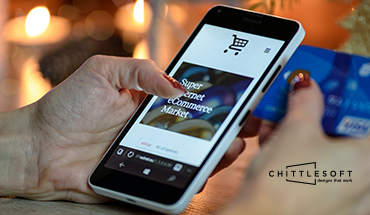
Are you selling a product or building a brand? If you’re not sure what the difference is, or how to start thinking of your company as a brand, this blog will give you a better understanding of these concepts.
When you focus purely on selling a product, it involves highlighting the product itself, and not the seller, i.e., your company. A product serves a specific purpose, and can be thought of as functional. A brand, on the other hand, involves values and beliefs. It makes a certain promise to the consumer, your “brand promise”, which extends to all its products and services. It, therefore, involves a more emotional connection with the consumer, beyond the functionality of any one of its products. Instead of viewing the selling of products and services as simple business transactions, building a brand will allow you to build relationships with your audience, that make a huge difference to the level of success your company achieves.
Good branding can help you meet various objectives, such as increasing the price of your product while retaining the extent of your market reach. But how do you build an effective and honest brand? Here are a few suggestions to help you get started:
1. Know what defines you as a brand
There shouldn’t be a gap between who you are as a company and how people perceive you as a brand. With a clear idea of how you want to be seen as a brand, you can educate people about your product USP in relation to your core values and brand promise. IKEA, for example, places emphasis on how their products are environmentally sustainable. They also place value on the ease with which people can assemble the furniture they sell. They communicate how they meet their customers’ needs as well as what they stand for as a brand. This helps them connect well with their customers. You can do the same by including information on how your target group’s problems can be solved using your products, which also involves talking about your company’s vision. Use strong visual communication in the form of your logo, taglines, mascots and other design elements to convey your mission.
2. Determine whether to position yourself as a usage brand or a purchase brand
When you sell with a usage mindset, you prioritize retaining customers in the long run. You do this by engaging with them on their use of products after purchase, and giving them a worthwhile experience, instead of just selling them your product at that point in time. This involves valuing the customer’s point of view, and their experience. It aims at getting loyal customers who are ready to pay a higher amount, those who will not move to another brand, and may even recommend your brand to their friends. It focuses on creating the value that people want, such as data that tells you when it is likely that your machine will stop working, and what you can do about it. Brands that adopt a purchase mindset, on the other hand, focus primarily on making the sale. Their communication is centred around the build up to the purchase, rather than on the experience post-purchase. So, if your transactions are largely short-term business to business (B2B) transactions, positioning yourself as a purchase brand may be more effective.
3. Find out what kind of brand your target audience wants to engage with
Use data analytics to know what people, including your target group, want to consume, and what they find engaging. You could start by doing a proper assessment of why new/regular customers buy from you. It may not be the reason you thought. There could be various reasons that people are buying from your firm (your ad worked well, there is a sale, a friend of theirs recommended you), but each reason could have a different implication. You can also engage on social media, connect with your customers, and reply to comments to know people’s opinions. Another thing you could do is study the data and look at case studies to understand how visual content such as videos can be optimized to suit their preferences, especially on social media. People now increasingly like being involved in creating the products they are going to buy by making choices in the production process. By letting people customize their product to an extent, you help them feel in control, while also understanding what your target audience is looking for. It, then, stops being a simple business transaction, where a product is purchased, and becomes more of an interaction that results in a purchase decision. Data can also be collected from those who buy from your competitors, to understand what appeals to them.
Patagonia, a company that sells outdoor clothing didn’t spend money on advertising, and instead relied on word-of-mouth marketing. They committed to environmental causes, which their audience (who spend a lot of time outdoors) greatly appreciated. This made people appreciative of their products. Amazon has a phone application that people can use to scan a particular product available, and compare it with the price and features of the same/similar product available in other stores. This places emphasis on creating a brand that prioritizes giving customers information honestly, and providing them with a choice to make for themselves. It also uses data from purchase history to make useful recommendations and provide good service. Oreo offered a prize for coming up with a good new flavor idea for their biscuit. Coca-Cola has been customizing their products in different areas, to suit local preferences.
4. Adopt an efficient way to communicate the definition of your brand accurately
Digital platforms such as a website and social media can be used to do this. To make a good impression on visitors to your website, it’s advisable to invest in UX design. Print mediums can also be used. Channels that are appropriate to the context should be chosen. A study showed that for B2B marketers,
magazines and journals were the most effective, followed by LinkedIn, industry specific online communities, and websites for communication. Other indirect ways of marketing your brand can also be adopted. You can incorporate your branding at various stages of providing your product or service such as website navigation, customer service and packaging. You can use discrete choice analysis, which gives people information on numerous products, such as their features, price, and brand and then lets them make a choice. When aspects such as these are used for branding, they are more effective because people are more involved in the different stages. The information given and promises made should be accurate, so that people know you can be trusted. For new products, brand awareness advertising may work. For products that already exist, limited time offers can prove to be more effective.
Communication should be done well, so that you are able to target the people you want to. The right information can be emphasized, and distortions reduced. When people give negative feedback or feedback that doesn’t match your desired brand image, you can analyze the problem and make changes. It is also important to engage with these people social media, and tell them that they have been heard. JetBlue uses social media to listen to their customers’ problems and offer solutions in good time. By taking feedback, they have now started offering customers more services such as rebooking flights that have been canceled due to bad weather.
5. Use an effective method to measure how accurately you are presenting your brand
You may want your brand to be perceived one way, but people may attach connotations that are not desired. By having a method to collect data ready in advance, you can get feedback early on, and make changes in order to move closer to the concept you want. You can use surveys (which can be repeated over time) to know your brand’s strengths and weaknesses. They can also be used to get feedback on what changes to make or what aspects to add to your company/while marketing your brand. Valuable changes can be made to your products, services and company.
6. Sell people values and not just products and services
This way you can emphasize the value and convenience that the target group will benefit from when they use your product or service. This is a shift from previously used branding methods, which were information heavy and focused on the features of the product or service, to those that emphasize a better customer experience. The features of your product may have complex terminology as well as workings, and may not be relatable to everyone. Communication that emphasizes the benefits that a particular target group may experience will be well-received by them. There was a survey conducted over many years, of 250 global firms, which showed that every year, more firms
prefer to focus on value while marketing.
Know what defines your brand/company, and give information about this accurately. This could include products/services that you provide, and how they solve your target group’s problems. You can collect data to know what people like and dislike about your brand, and whether it matches what you want to communicate. The right platform can be chosen to communicate your brand to the right audience. By involving your customers in the process of providing the product/service, and letting them make decisions, you can subtly market your brand. Feedback (using an effective measure) should be taken over time to make changes to your brand and meet your objectives. Try to focus on the value that your product is going to create for your target group, when you’re selling your product/service and creating your brand.
If you’re looking to communicate better and present your brand more clearly to your target audience online, contact us for a free consultation on the different ways in which you can market digitally.








